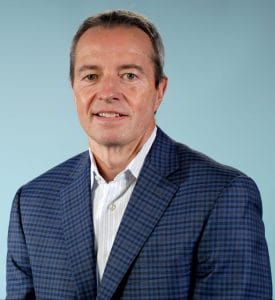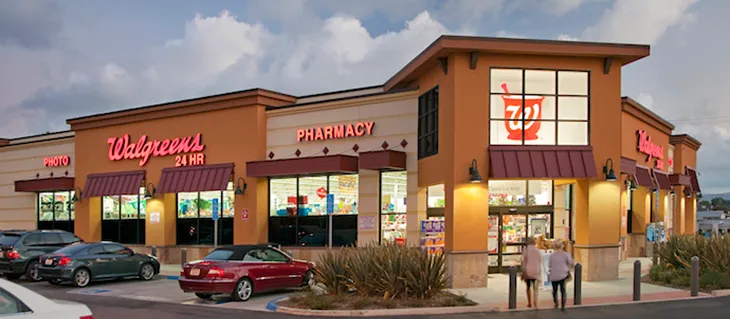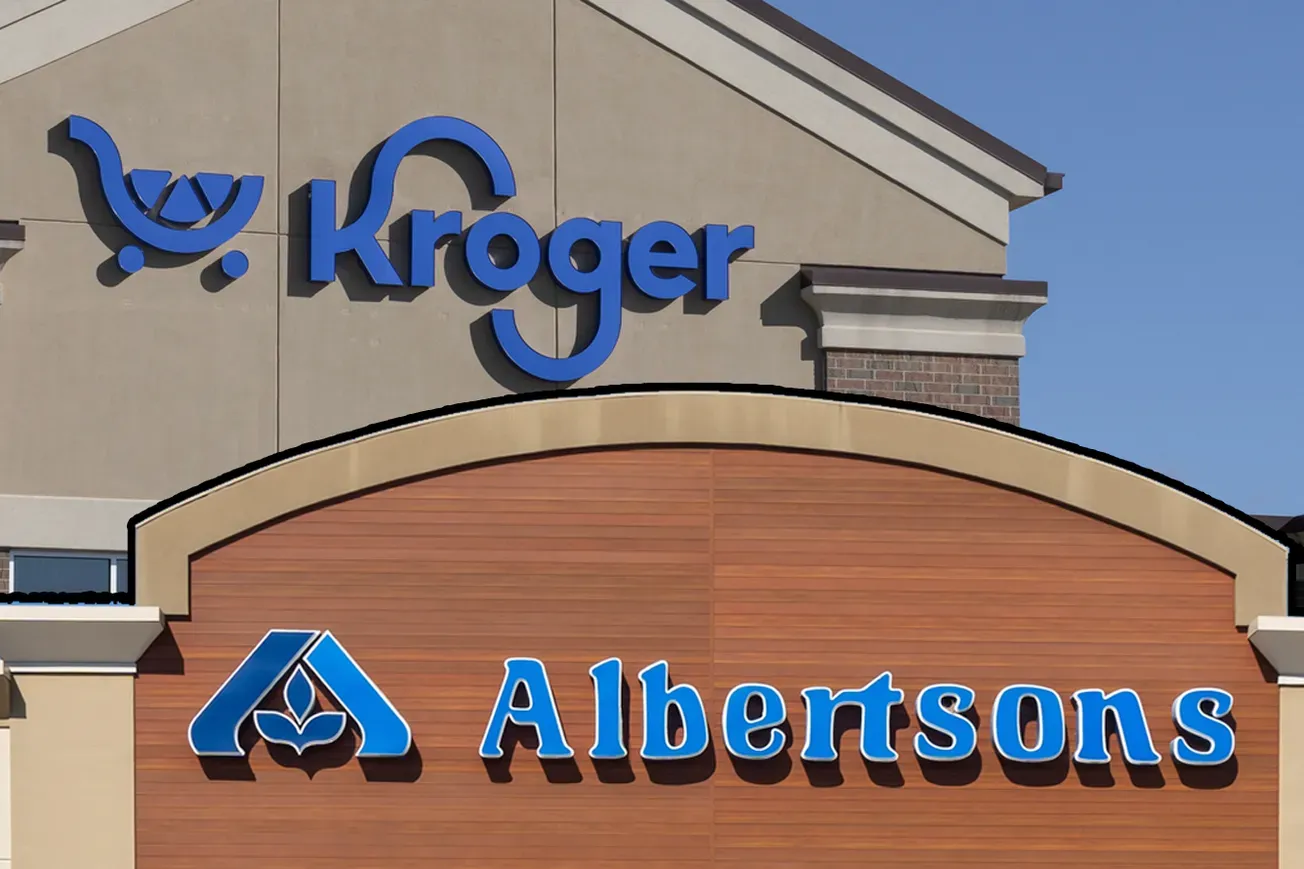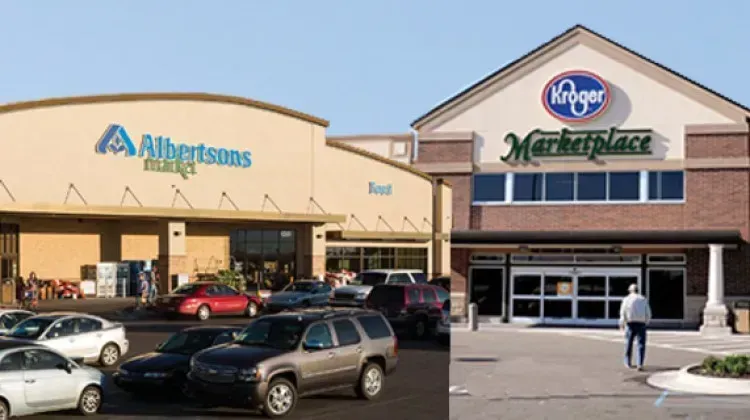NEW YORK — John Standley’s road was long and winding, but the direction was always upward.
Early lack of ambition — his father applied to college for him — did not prevent Standley from ascending to the very heights of chain drug retailing, first as chief executive officer of Rite Aid, and then as president of Walgreens.

John Standley
Standley, who stepped down from Walgreens in November to spend more time with his family and focus his career efforts on a broader leadership role, had been president since September 2020 and had headed Rite Aid from 2010 to 2019. In recognition of his leadership at the two companies, the editors of Chain Drug Review have honored him with the publication’s Lifetime Achievement Award.
For his part Standley is quick to credit his rise to the support of others around him, especially his wife of 28 years, Annie.
“It just takes a team,” he says. “There’s no two ways about it.”
The same can be said of the whole chain drug industry, he noted. “It’s really about people. Look back at Rite Aid’s story. The reason it’s still here, honestly — with all of the pressures that have been applied to it — is its people. I mean, day in and day out there are individuals who care so deeply for the business and their customers and patients that they work through the pressures, they figure out a way to get things done, even with the industry headwinds and capital structure headwinds. Regardless of whatever additional challenges arise, they’ll be there every day getting the job done.
“It’s the same thing at Walgreens. It’s been faced with its fair share of challenges over time. But those team members are there every day taking care of customers. It’s just incredible.”
Standley’s first job was in public accounting at the Los Angeles office of Arthur Andersen, where he met a coworker named Annie. ”In that day and age when you were young and working crazy hours in public accounting, that’s how you met people,” he says. “We didn’t have social media or dating apps. Annie and I have been together ever since.”
She has stood by him throughout his career, he says. As much as he’s advanced, he emphasizes “it’s been a battle the whole way. It always is. Doing the things that we do can be hard and lonely, and you make some really difficult decisions along the way. But Annie’s always backed me — and beyond that provided input and guidance.”
Among Standley’s clients at Arthur Andersen was the Food 4 Less supermarket chain, where he went on to work in finance. An earlier leveraged buyout brought the challenge of making needed operational improvements while managing a difficult financial situation. The work succeeded enough to help foster the chain’s evolution through mergers and acquisitions into becoming a unit of Fred Meyer Inc., which was sold to Kroger Co. in 1999.
Standley rose through the ranks to become chief financial officer of Fred Meyer Inc., which had the No. 1 market share up and down the West Coast. He turned down a regional role at Kroger to join wholesaler Fleming Cos., where he stayed for six months until Bob Miller called.
Miller, the soon-to-be chairman of Rite Aid, had headed Fred Meyer when Standley was there, and he asked Standley if he wanted to join the drug store chain as CFO. Standley would be part of a new management team including Bob, Mary Sammons and Dave Jessick brought in to address significant operational, financial and accounting issues.
Private equity firm Leonard Green and Partners, which had just invested $300 million in the company, recruited the new team, which started work in late 1999.
It took just a couple of days to figure out that Rite Aid was in “really, really big trouble,” Standley says. Initial meetings with the accounting staff revealed a restatement that attempted to address concerns previously raised by the SEC was flawed and that a substantial portion of the $300 million had been used up almost immediately.
“So we didn’t have any money, and the books were a mess,” he says. And the fiscal problems — including a poorly financed acquisition of pharmacy benefits manager AdvancePCS — reflected inventory and merchandising failings.
Needing “a massive effort to find some short-term liquidity,” Rite Aid put together one of the first asset-backed facilities, for about $1 billion.
Righting the books took about six months, over which Rite Aid conducted a restatement with about a $1.6 billion adjustment — at the time one of the largest in the U.S. “Today it sounds like nothing, but for that time it was a rather shocking number,” he says.
The SEC’s approval of the restatement restored the company’s access to the capital markets and removed the threat of a stock exchange delisting. “So that was kind of my beginning at Rite Aid.”
Ensuing years saw the retailer pay down debt and get back on its feet. While Standley’s responsibilities grew, he was eager to get “even deeper into the business.”
The opportunity to do so came when Yucaipa Cos., which had put together Fred Meyer, made a large investment in Pathmark Stores Inc. When Yucaipa asked Standley in 2005 if he wanted to be Pathmark’s CEO, he said, “Hell yes. Awesome. I’d love to give that a try.”
“But it was scary,” he remembers. “It was tough to go from being an important part of a big organization to the person who is ultimately responsible every day for everything that happens. It was a pretty big decision, but it was the right one.”
The time at Pathmark brought two additions to Standley’s inner circle: finance whiz Frank Vitrano and proven operator Ken Martindale, whom Standley recruited from Fred Meyer. Both would join him upon his return to Rite Aid.
Pathmark made significant progress, but ultimately Standley worked to merge it with A&P to gain efficiency and scale, which ended his tenure. He was doing consulting work when the Rite Aid board sought out his ideas for the company’s strategy and direction. That led to an offer to rejoin the company as president and chief operating officer in 2008 and transition to CEO in 2010.
Two significant events had changed the picture in Standley’s absence: Rite Aid’s acquisition of former Eckerd stores in several states, and the Great Recession.
Standley, CFO Vitrano and president Martindale formed “a three-headed beast jumping right into the situation.” The trio had “a great run” from 2008 through 2015. “We just kind of rolled up our sleeves and focused on the customer and patient, trying to build a strategy around where this business could go.” A focus on wellness provided “the operational flexibility to meet the needs of customers and patients across a broad spectrum of possibilities.”
The chain pioneered health care’s bigger role at the corner drug store, while building up a loyalty program, bolstering pharmacy technology and acquiring a PBM, Envision Rx. Rite Aid’s stock price rose from under $1 to upwards of $8, but management recognized the company needed scale to keep up with Walgreens and CVS as well as PBMs.
Standley and other top executives settled on Walgreens as a merger partner. It would pay Rite Aid shareholders $9 per share. “The value creation was pretty amazing,” he comments. “It was a heck of a deal. It was the right thing, and it was going to be a good answer for our customers, patients and team members.”
The Federal Trade Commission saw things differently, however, failing, Standley says, to appreciate that competition from Walmart, supermarket chains, mail order pharmacies and consortiums of independents negated any monopolistic implications. Ultimately, after two years of trying to negotiate divestitures and address the anchor chain concern, Rite Aid and Walgreens gave up on the original deal. And over that period, from 2016 to 2018, Rite Aid suffered as PBMs figured that with the merger coming there was no reason to pay Rite Aid any more than the bare minimum.
“So we were under a tremendous amount of pressure,” remembers Standley. “I felt like all the progress that we made leading in to the merger was getting erasedd.”
After unwinding the deal, Rite Aid collected a breakup fee, but the company had already essentially re-levered itself. Lost earnings from the lowered reimbursements and the inability to gain access to more pharmacy lives forced it to offer about 2,000 stores to Walgreens.
Another route to a more stable future emerged when Miller called again, this time about the possibility of Albertsons Cos. merging with Rite Aid. “Initially I wasn’t sure it was going to work after getting beat up pretty good on the Walgreens deal,” Standley says. “I was a little bit skeptical going into it, but after we did some work on it, it really started to make a lot of sense. There was a lot of industrial logic to putting the two companies together.” The FTC this time gave a quick green light, but a group of Rite Aid’s shareholders — led by a hedge fund — scuttled the deal, contending the company was worth more than Albertsons was offering.
“That’s when I approached the board and started a discussion about my succession, and that pretty much completed my Rite Aid experience,” Standley says. “It was disappointing. I really thought we had something that could get us to where we wanted to be. And I think we did a lot of great work on that company. There’s always more to do and I think [CEO] Heyward [Donigan] and [CFO] Matt [Schroeder] and the team have done a lot of great work since to advance the brand and expand digital capabilities.
“But we had done some tremendous things and really tried to focus on the team member and making the stores easier to run. We had a great pharmacy system, we did a bunch of merchandising work, and we put a ton of capital back into the stores.”As Standley completed his one year noncompete with Rite Aid, he got another life-changing call, this time from Walgreens Boots Alliance CEO Stefano Pessina, about the opportunity to be the president of Walgreens. At Walgreens, Standley joined “a great team” in 2020, taking on a new role of deep involvement in day-to-day operations. “I had a lot of fun with that,” he says. “I was probably driving everybody there crazy doing it, but it was a blast.”
During his tenure at Walgreens, the company administered over 70 million COVID vaccines and 34 million COVID tests, rapidly expanded its omnichannel capabilities, launched its new myWalgreens customer engagement and loyalty program and began the implementation of its pharmacy micro-fulfillment strategy. He also helped develop strategies for Walgreens’ pursuit of independence from the PBM industry. “I’ll be excited to see how that strategy manifests itself over the next couple years,” he comments.
A complicating factor at Walgreens was the pandemic, which had just started when he joined the company. Noting there were few people in the office the day he got there, he says, “It was just crazy. But our store and distribution teams at Walgreens and across the whole industry just did an amazing job. It’s just absolutely incredible. Other people were working from home, but our store and distribution teams couldn’t do that. They had to be there physically day in and day out, with a pandemic raging around them, to provide customers with critical products and services. And they did it.” After 22 years in the industry, including two intense years at the helm of Walgreens, Standley decided to step down from his position to spend time with his family and focus his career efforts on a broader leadership role.
Looking ahead, he says executive vice president of pharmacy Lee Cooper, retail president Tracey Brown, senior vice president of operations Lisa Badgley, senior vice president of pharmacy Rick Gates and chief supply chain officer Roxanne Flanagan “and the whole team are clearly going to find a lot of great opportunities. And with the leadership of [Walgreens Boots Alliance CEO] Roz [Brewer], there’s a lot of runway to drive the strategy forward.”
Although Standley is receiving the Lifetime Acheivement Award, he is still interested in being involved in the industry. He says if he gets a call from someone like Bob Miller, “I’m answering the phone.”









